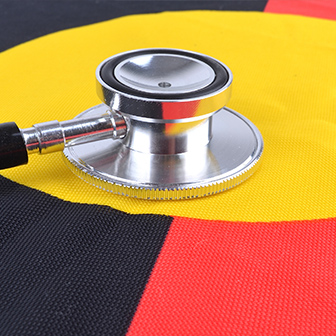Flood Information – October 2022
A flood warning is currently in place for the Echuca and Moama regions.
Please Plan to Stay Safe
Njernda offices are currently closed, but we are doing our best to support Community. We are supporting our most vulnerable community members first. Please Contact Us if you or someone you know needs support. More information on Njernda Contacts at this time here.
You can get the latest information at the Bureau of Meteorology website:
http://www.bom.gov.au/vic/warnings/flood/summary.shtml
And further information from:
Victorian State Emergency Service (SES)
NSW State Emergency Service (SES)
IF YOU ARE IN A LIFE-THREATENING SITUATION CALL TRIPLE ZERO 000
VICTORIA: Visit the VicEmergency website or download the VicEmergency App for the latest warnings and updates direct to you
NSW: Visit the NSW Emergency Services or download the Emergency+ App (scroll to the bottom of the page) for the latest warnings and updates direct to you
UPDATES BELOW:
GREATER BENDIGO ICC COMMUNITY NEWSLETTER NOVEMBER 3
Good news! Our Njernda Medical Centre will be open from tomorrow with limited capacity. Please make an appointment for a phone consult for non-urgent consults with our GP.
As this is an unprecedented emergency situation affecting all of us, we want to attend to community members who find themselves with no supplies, food, water, candles and other lifesaving essentials now. There are limited stocks and we have limited capacity…and there is high demand from community at this time. We are prioritising our emergency supplies to support those providing emergency response and to community members who have no other supplies on hand. We understand that this is a difficult time for all of us and together we need to work through supporting the most needy and vulnerable members.

Njernda is proud to be part of the amazing effort that is supporting our Echuca Moama community through this crisis. Today we are doing our bit in supporting Echuca Village with food for volunteers working so hard to protect our communities. Thanks to everyone who is part of this effort to keep our Echuca Moama people, homes, businesses and families safe. Echuca CFA Echuca Village Fire Brigade
There are so many hazards and contaminants in floodwaters. You don’t know what’s under or in the water. Pollution of all sorts flows into the waterways, and it may be contaminated by sewage, industrial waste and chemicals. Download a flood-safety-factsheet. Or get more information from https://www.health.vic.gov.au/environmental-health/floods

BARMAH has been evacuated. This was the Murray River on 19/10, but when the peak arrives, it WILL break its banks. If you have not left already, please go now! You are putting yourself and our busy emergency crews at risk if you stay.

Sandbagging Tutorial from Echuca CFA and Community Briefing 19/10
Do you have a disaster plan? It is particularly important for patients with a chronic illness to have a disaster plan.
Diabetes
Diabetes control can alter during and after a disaster and insulin-dependent patients with diabetes are at greatest risk of worsening diabetic control.
If you are insulin-dependent, create a diabetes emergency kit, and store the kit in a safe location:
Include the following:
-
- -Either glucose tablets or jelly beans, to assist in the treatment of hypoglycaemia.
- -Pump settings and passwords for patients with an insulin pump
- -An insulated portable medication bag, to help keep insulin stored at a safe temperature
Ensure a safe temperature:
-
- -Don’t freeze the insulin or store insulin directly adjacent to ice.
- -If using an ice brick in the insulated bag, wrap the ice brick in a cloth before adding the insulin to the bag.
- -Consider printing a diabetes emergency plan booklet to fill out and store with your emergency kit
Seek medical advice immediately if you are unable to access your normal insulin dose and brand. Insulin brands and doses are not interchangeable, and adjustment may be required.
Foot care is extremely important in a disaster. To minimise wounds and infection, wear socks and closed toe comfortable shoes.
Dementia
Patients and carers should consider the best escape routes from home, and practice evacuating to help with psychological preparation.
If the patient does not drive, consider a plan for aided evacuation from the home and document this on the plan.
Add the following patient details to their disaster plan:
-
- -Likes and dislikes
- -Daily routine
- -Level of care required for activities of daily living
- -Language spoken at home
- -Mobility needs
- -Behavioural strategies that help with agitation
- -Next of kin contacts
Identify a support network to help in disaster situations e.g. neighbours, community groups, and relatives. Include several people from different locations. Give a copy of the disaster plan to these contacts. Consider adding comfort items and simple activities to the disaster kit. Be aware that a disaster may trigger past experiences of trauma such as war or deprivation. This may trigger fear related to uniformed people, queuing, hunger, cold, shared spaces for sleeping and eating. If this occurs, try to de-escalate or change the situation and use distraction techniques.
Chronic respiratory disease
Continued access to inhaler medications is important in the management of respiratory disease. You may not be able to return home to access your usual inhaler medication, so keep a second supply of inhalers in a safe place offsite e.g. in their handbag, car, or at a family member’s house.
Cardiovascular disease
Elevated blood pressure during a disaster may increase risk of complications for patients with:
-
- -Pre-existing hypertension.
- -History of heart attack or stroke.
Patients with significant cardiovascular disease should:
- -Store (if applicable) their portable blood pressure machine with their emergency kit.
- -Check their blood pressure regularly.
- -Seek medical advice if blood pressure is higher than their normal readings.





















